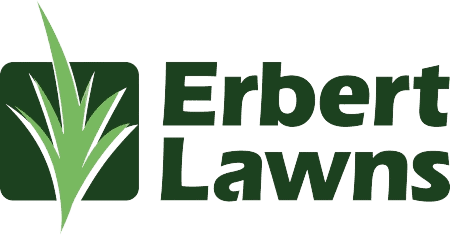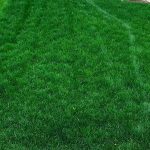Nature is a wild place. There are creatures, plants and fungi cohabiting. Your lawn is a part of that ecosystem. A lawn lover puts in all this effort and time into their lawn so that when they see all the shiny green blades their heart burst with the bliss that comes with success after the hard work is done. But wait… what is that? A yellow patch?! But you did everything right. You fertilized and aerated. You mow it regularly and have a pristine watering schedule. So what gives? It could be lawn grubs.
Grubs are the larvae of various beetles and they can cause some serious harm while they munch on your lawn’s root system. A weak root system affects the grass’ ability to absorb water and nutrients. It will become weak and incapable of handling the stress of the sun beating down on it all day every day the further you get into the growing season. An unhealthy lawn is also at a higher risk for contracting lawn disease.
In the identification process you or a professional will need to investigate the patchy areas in order to confirm the suspicion of grubs. Treating the area without proper identification is a waste of time and money. Take a shovel to dig in a small area that has patchy brown spots. Inspect the ground below. A severe case of grubs will allow the grass to be pulled up like a carpet. If there are 5 or more grubs within a square foot treatment is necessary.
There are several types of grubs that a professional lawn care company will look for when inspecting your lawn for grubs. The most common grub is the larvae of Billbugs. Billbugs, also known as Weevils (snout beetles), lay their eggs during the spring and summer months. The eggs hatch in as soon as 3 days. The billbug grubs are small and will look like grains of rice in the soil. In adult form the billbug is small, only about a ¼ inch. The life cycle from start to finish is approximately 45 days. When abundant these grubs can damage your lawn but generally don’t pose an issue due to their small size until there is an influx of these beetles where you live.
White grubs, the larvae of various species of scarab beetles, are the type that causes the most damage to your lawn. Japanese beetles, June bugs and European chafers all fall into this category They are much larger in size than billbugs. Depending on the species, a full grown grub can grow up to 2 inches long. Grubs will be very easy to identify in the soil. They are C shaped with a cream/white colored body and brownish-red head. They will also have 3 sets of mandibles near their heads. Japanese beetles are an invasive species in Colorado and the damage they do continues beyond eating the roots of your lawn. Grubs turn into a pupa until they are mature enough to emerge from the ground as full fledged beetles.
They can cause extensive damage to ornamental flowers, foliage and even trees. If you have a garden of fruits and veggies it will be devoured in no time if Japanese beetles are nearby. This is why it is imperative to identify and treat grubs in your lawn immediately once suspicion of grub activity arises.
Erbert Lawns offers a treatment for lawns affected by grub control. Set up a lawn care program with us to have lawn care experts that are always just a phone call away (303-948-6631). Let us create a customized plan to get your lawn looking great and grub free this summer!










